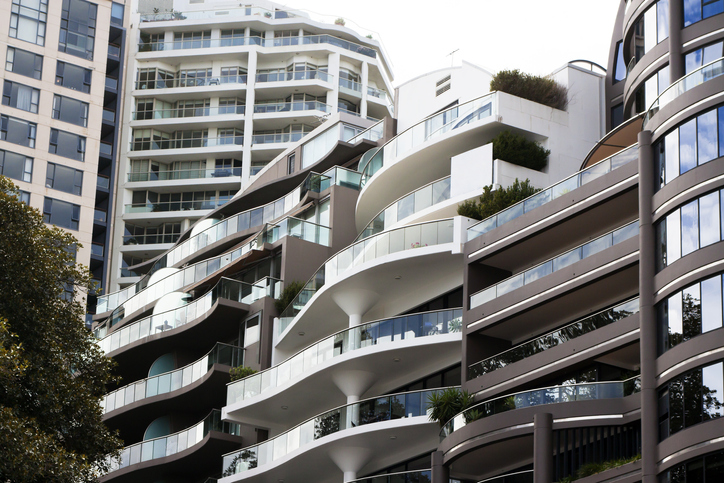The Most Expensive U.S. Listing Is a $340 Million Work in Progress
Developer Mohamed Hadid is behind the under-construction megamansion.
A house vying to become the most expensive in the U.S. doesn’t even exist yet.
With an enormous $347 million asking price, an extravagant and under-construction megamansion in Los Angeles is now the most expensive home on the U.S. market.
Listed Thursday, the 7245sqm property’s nine-figure price tag surpasses that of anything else being marketed for sale on public listing portals across the country, according to records with online property database Zillow.
It dwarfs the asking price of the second most expensive property on the public market, a Manhattan penthouse asking approx. $234 million, records show. And if it sells for that price it’ll beat the record-setting sale of the $238 million Manhattan apartment bought by billionaire hedge-fund manager Ken Griffin in 2019.
The owner of the mammoth Beverly Hills trophy home is a limited liability company managed by real estate developer Mohamed Hadid, per company filings, and the multi-level home on close to 37 acres is the largest property ever permitted in the city, according to the listing with Rodrigo Iglesias and Helena Deeds of Hilton & Hyland.
“Nothing compares,” touts the listing, adding that it’s “the finest compound ever to be completed.”
Positioned on the winding streets that overlook the city and close to Franklin Canyon Park, the mansion is to be equipped with a total of 19 bedrooms and 28.5 bathrooms, the Beverly Hills compound will have an impressive catalog of high-end amenities spread over its main house and guest house.
They’ll include a bowling lane, a bar, a massage room, a wine tasting room, a cigar lounge, a wine cellar, a 36-person theatre, a Turkish bath, a pool and a pool bar, and a five-car garage with two vehicle turntables.
Construction is expected to be complete in less than 24 months, according to Forbes, which first reported the listing.
Potential buyers have the option of purchasing the home upon completion for the full $347 million, or the unfinished property can be bought when only the foundation is completed for $92 million, according to the listing.
It’s not clear how much Mr. Hadid, 72, paid to acquire the plot the home will sit on. The developer, father of supermodels Gigi and Bella Hadid, last month appeared in court over his controversial construction of a mansion in Bel Air. He could not be reached for comment.
The surge at that very top end is being propelled largely by increased wealth, a renewed focus on and appreciation of what home is and a lack of other spending options over the past year, according to experts.
In the four months to the end of April, the $50 million-plus market was well ahead of previous years. Sellers across the country had already listed 30 ultra high-end homes at that price level and seriously deep-pocketed buyers had purchased eight, Mansion Global previously reported.
Reprinted by permission of Mansion Global. Copyright 2021 Dow Jones & Company. Inc. All Rights Reserved Worldwide. Original date of publication: August 20, 2021
 Copyright 2020, Dow Jones & Company, Inc. All Rights Reserved Worldwide. LEARN MORE
Copyright 2020, Dow Jones & Company, Inc. All Rights Reserved Worldwide. LEARN MORE
This stylish family home combines a classic palette and finishes with a flexible floorplan
Just 55 minutes from Sydney, make this your creative getaway located in the majestic Hawkesbury region.
A Sydney site with a questionable past is reborn as a luxe residential environment ideal for indulging in dining out
Long-term Sydney residents always had handful of not-so-glamourous nicknames for the building on the corner of Cleveland and Baptist Streets straddling Redfern and Surry Hills, but after a modern rebirth that’s all changed.
Once known as “Murder Mall” or “Methadone Mall”, the 1960s-built Surry Hills Shopping Centre was a magnet for colourful characters and questionable behaviour. Today, however, a $500 million facelift of the site — alongside a slow and steady gentrification of the two neighbouring suburbs — the prime corner property has been transformed into a luxury apartment complex Surry Hills Village by developer Toga Group.
The crowning feature of the 122-apartment project is the three-bedroom penthouse, fully completed and just released to market with a $7.5 million price guide.
Measuring 211sqm of internal space, with a 136sqm terrace complete with landscaping, the penthouse is the brand new brainchild of Surry Hills local Adam Haddow, director of architecture at award-winning firm SJB.
Victoria Judge, senior associate and co-interior design lead at SJB says Surry Hills Village sets a new residential benchmark for the southern end of Surry Hills.
“The residential offering is well-appointed, confident, luxe and bohemian. Smart enough to know what makes good living, and cool enough to hold its own amongst design-centric Surry Hills.”
Allan Vidor, managing director of Toga Group, adds that the penthouse is the quintessential jewel in the crown of Surry Hills Village.
“Bringing together a distinct design that draws on the beauty and vibrancy of Sydney; grand spaces and the finest finishes across a significant footprint, located only a stone’s throw away from the exciting cultural hub of Crown St and Surry Hills.”
Created to maximise views of the city skyline and parkland, the top floor apartment has a practical layout including a wide private lobby leading to the main living room, a sleek kitchen featuring Pietra Verde marble and a concealed butler’s pantry Sub-Zero Wolf appliances, full-height Aspen elm joinery panels hiding storage throughout, flamed Saville stone flooring, a powder room, and two car spaces with a personal EV.
All three bedrooms have large wardrobes and ensuites with bathrooms fittings such as freestanding baths, artisan penny tiles, emerald marble surfaces and brushed-nickel accents.
Additional features of the entertainer’s home include leather-bound joinery doors opening to a full wet bar with Sub-Zero wine fridge and Sub-Zero Wolf barbecue.
The Surry Hills Village precinct will open in stages until autumn next year and once complete, Wunderlich Lane will be home to a collection of 25 restaurants and bars plus wellness and boutique retail. The EVE Hotel Sydney will open later in 2024, offering guests an immersive experience in the precinct’s art, culture, and culinary offerings.
The Surry Hills Village penthouse on Baptist is now finished and ready to move into with marketing through Toga Group and inquiries to 1800 554 556.
This stylish family home combines a classic palette and finishes with a flexible floorplan
Just 55 minutes from Sydney, make this your creative getaway located in the majestic Hawkesbury region.



























